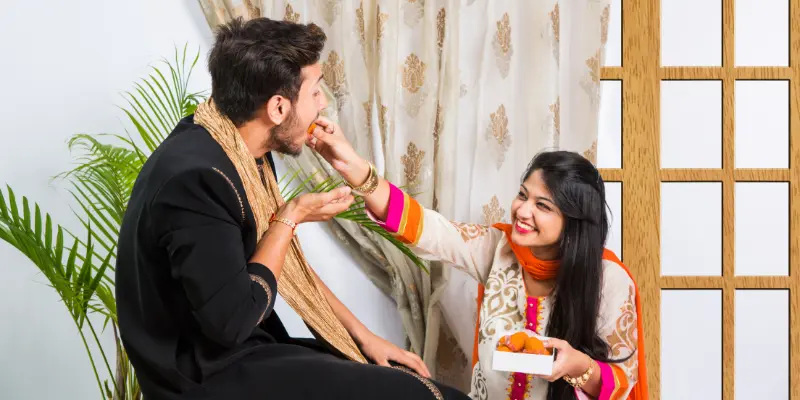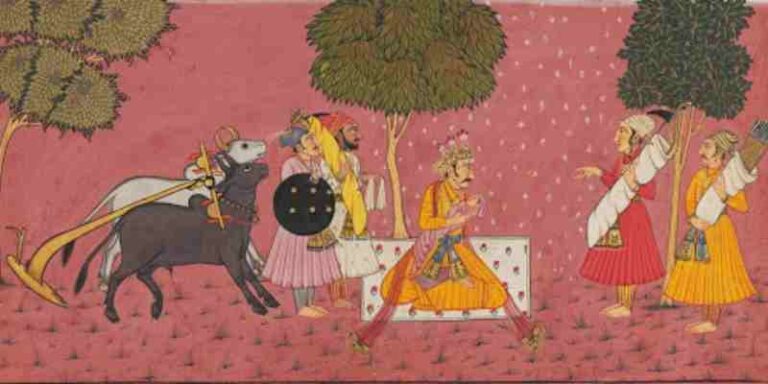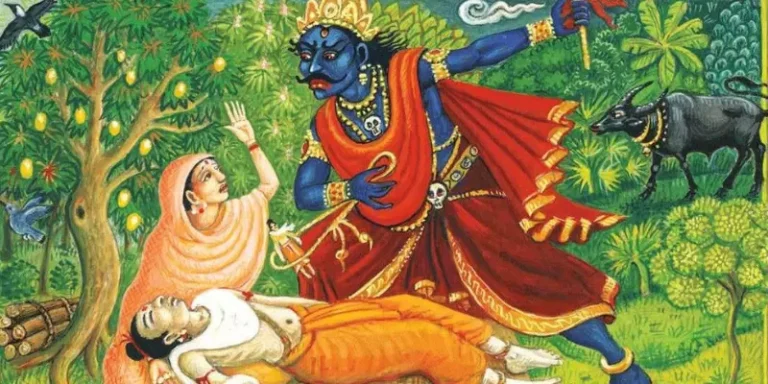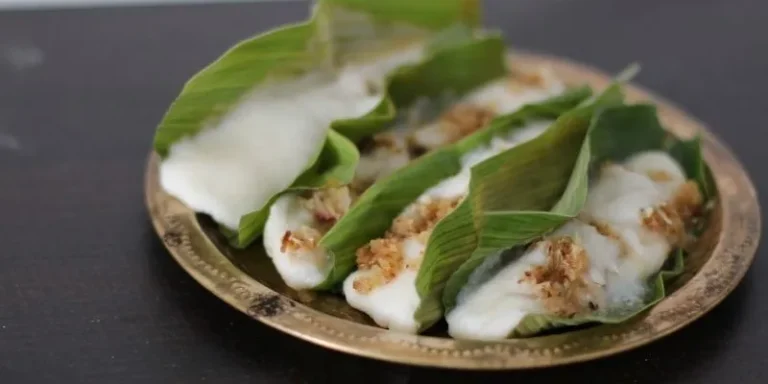Incredible India, the land of festivals, has a festival to cheer in every kind of human blood and relationship. Raksha Bandhan or Rakhi as it’s also known is one such festival that compliments the subliminal bond of unconditional love between brother and sister, and it is one of the most celebrated festivals in India.
An Introduction to Raksha Bandhan
It is a popular traditional Hindu festival that typically falls every year on the last day of the Hindu month of Shravan (usually in August). Rakhsha Bandhan also known as Rakhi Purnima falls on the full moon day in the Hindu Lunar Calendar month of Shravana. Rakhsha Bandhan being a secular festival is celebrated across India, irrespective of state, caste, and religion.
It is also observed in Mauritius and Nepal. Sisters of all ages tie a talisman, called Rakhi around the wrists of their brothers, symbolically protecting their brothers, and receiving a gift in return. The festival originates from the epic Mahabharata, where Draupadi asks Lord Krishna to tie a Rakhi around Arjuna’s wrist so he will protect her from her husband’s enemies during battle.
The exact meaning of Raksha Bandhan is the bond of protection. On this religious occasion, brothers and sisters promise eternal love for each other. Sisters pray for the long life of their brothers by tying a sacred thread on the wrist. In return, the brothers promise to protect their sisters from every obstacle and also give their sisters a gift.
Story Behind Raksha Bandhan
It is hard to pinpoint exactly when the tradition of Raksha Bandhan or Rakhi started, but it is true that it is about the strong bond between the people observing it. It can be celebrated among siblings, partners, or even neighbors. However, nowadays we mostly celebrate it as the bond between siblings and their promise to protect and support each other.
Krishna and Draupadi
The story of Raksha Bandhan is related to the Hindu legend Mahabharata. In Mahabharata, Lord Krishna once cut his finger which was bleeding. Seeing this, Draupadi tore a piece of cloth from her Saree and tied it to his finger to stop the bleeding. The piece of cloth became a sacred thread at that moment. Considering the cloth she tied as a sacred thread, Krishna promised Draupadi to protect her from all evils throughout her life. When the Kauravas tried to undress Draupadi after pulling her by her hair, dragging her to the court of King Dhritrashtra, and manhandling her, Krishna rescued her dignity and made her saree never-ending to keep her covered.
Yama and Yamuna
According to another epic, the ritual of Rakhsha Bandhan was followed by Yama, the Lord of Death, and the Yamuna, the river that flows in India. As per mythology, Yamuna once tied a thread on the wrist of Lord Yama, the Lord of Death granted her immortality. Lord Yama was pleased by this gesture and while granting protection and eternality, also promised that he would bless every brother who protected his sister throughout his life.
Birth of Santoshi Maa
It is also accepted that Lord Ganesha had created Goddess Santoshi out of heavenly flames as his sons Shubh and Labh had insisted on having a sister after seeing Manasa tying Rakhi to Lord Ganesha. Rakhsha Bandhan is celebrated to rejoice in this holy relationship between Shubh, Labh, and Santoshi.
Goddess Laxmi and King Bali
Mahabali, the demon King was a dedicated devotee of Lord Vishnu. Due to his intense devotion, Lord Vishnu took the responsibility to protect Bali’s Kingdom leaving his residence in Vaikuntam. The wife of Lord Vishnu Goddess Laxmi, wife of Lord Vishnu became very sad. She wanted to stay with Lord Vishnu. So, she went to King Bali in disguise as a Brahmin woman and took waste in his castle. She tied Rakhi on King Bali’s wrist on the full moon day of Shravana month. Later Goddess Lakshmi disclosed who she was actually and why she had come. The King was inspired by her and Lord Vishnu’s goodwill and affection for him and his family. King Bali requested Lord Vishnu to go with his wife to Vaikuntam. It is believed that after that day onwards it has become a tradition to invite one’s sister on Shravana Purnima to tie the auspicious thread of Rakhi.
Indrani tying a rakhi to her husband Indra
In Hindu tradition, it is believed that the first rakhi was tied to a husband, not a brother. Indra’s wife Sachi consulted with Lord Krishna during the war between god and demons. Lord Krishna gave her a holy cotton bracelet to tie around Lord Indra’s wrist to protect him from all obstacles.
Roxana and King Porus
Another myth is that when Alexander the Great invaded India in 326 BC, his wife Roxana sent Porus a sacred thread and requested him not to harm her husband on the battlefield. Honoring the request, when he attacked Alexander he refused to kill him. At last, Porus would lose the battle of the Hydaspes River but would gain Alexander’s respect and privilege. Finally, after his death, Porus would become a very loyal Macedonian Satrap.
Lord Krishna advises King Yudhishther to tie Rakhi
King Yudhishther was worried about his brothers, Pandavas before the war of Kurukshetra. He sought Lord Krishna for guidance on how to protect all his brothers from impending doom. Lord Krishna instructed him to perform a ceremony, where on the full moon day of Shravana month, a priest will tie a rakhi around his right wrist for protection.
Queen Karnavati sent a rakhi to Emperor Humayun
Bahadur Shah Zafar of Gujrat attacked the kingdom of Chittor which was ruled by Rani Karnavati. The queen was seeking support from other kingdoms. She sent a rakhi and asked for protection from Humayun, who was in the middle of a battle. Humayun left everything and went to Mewar after receiving the letter. Sorrowfully, he arrived too late and the Rajput family was defeated. According to tradition, Rani Karnavati performed Johaur to save her dignity. But sticking to his promise, Humayun afterward defeated Bahadur Shah Zafar and restored the kingdom to her eldest son Vikramjeet.
Maharani Jindan sought refuge in Nepal
Maharaja Ranjit Singh, the founder of the Sikh empire’s wife Maharani Jindan sent a rakhi to the ruler of Nepal. Jung Bahadur of Nepal provided her protection when the Sikh empire was conquered by the British in 1849.
Rabindranath Tagore started Rakhi Mahotsav in Bengal
Rabindranath Tagore started Rakhi Mahotsav in order to strengthen the bond between Hindus and Muslims of Bengal during the partition of Bengal. He motivated them to support each other and stand against the Britishers together. Ongoing that tradition, the people of West Bengal tie rakhi to their neighbors and close friends symbolizing love, mutual respect, and brotherhood.
Symbolic Colors of Rakhi
The favorable colors of the Rakhi festival (Raksha Bandhan) are yellow, orange, and red which symbolize love and loyalty. Rabindranath Tagore added white color to these colors which are marked as a bond of love between siblings transcending from blood relationship to friendship.
Celebration of Raksha Bandhan

Rakhi is celebrated with great passion in the following ways –
Sisters walk away to the markets to buy the choicest Rakhi for their brothers in advance so that they can send the Rakhi by post if their brothers are living far away, while the brothers look after the market for gifts for their sisters that fit their pocket and budget.
In this modern day of the internet, the idea of sending Rakhis and gifts directly through online stores is also fast catching up. Some even choose virtual rakhis, instead of real ones.
It is a scenario of great entertainment in all the houses on the day of rakhi, where the entire family gathers together. Women and girls apply henna on their palms and family members flaunt new clothes. There are plenty of sweets and a carnival spirit in all the homes.
After the worship of the family deity, the sisters perform the brother’s Arti and apply tilak and rice on the forehead as a favor. In return, the brother provides a gift to his sister and promises lifelong protection.
Post-Independence Rabindranath Tagore instigated the Rakhi Mahotsav in Shantiniketan, with the idea of propagating the feeling of universal brotherhood and peace. Rakhi symbolizes solidarity in human relationships.
On this day of Raksha Bandhan, the armed forces are also not forgotten. The men in uniform are felicitated on this day and are out there protecting the nation as well as its citizens.
Raksha Bandhan Celebration in different states –
Although Rakhsha Bandhan is celebrated in various parts of South Asia, different regions mark the festival in different ways.
In the state of West Bengal, Rakhsha Bandhan is also called Jhulan Purnima. Prayers and puja of Krishna and Radha are observed there. Sisters tie rakhi to brothers and wish for a long life. Political parties, offices, friends, schools colleges, and streets to the palace observe this day with new hope for a good relationship.
Rakhsha Bandhan is celebrated along with Narali Purnima (coconut day festival) among the Koli community in Maharashtra. The fishermen’s community of the coastal state is called Kolis. The fishermen offer prayers to the Hindu god of the sea, Varuna to pray for his blessings. Coconuts were thrown into the sea as offerings to Varuna as a part of the ritual. The girls and women tie rakhi on their brother’s wrist.
It is mostly a common practice to fly kites on the occasions of Janmashtami and Rakhsha Bandhan in the region of North India.
It is not uncommon to see the sky filled with kites of all shapes and sizes, on and around these two dates. The locals buy kite string, commonly called Gattu door in the local language.
In addition to celebrating Rakhsha Bandhan, people also observe the festival of Salono in Haryana. Salono is observed by priests solemnly tying rakhi against evil on people’s wrists. Hence, sisters tie threads on brothers with prayers for their well-being and the brothers promise to safeguard her.
Rakhsha Bandhan is named Janai Purnima or Rishitarpani in Nepal and involves a sacred thread ceremony. It is remarked by both Hindus and Buddhists of Nepal. The Hindu men change the thread they wear around their chests. In some parts of Nepal, girls and women tie rakhi on their brother’s wrists. The Rakhsha Bandhan like brother sister festival is celebrated by other Hindus of Nepal during one of the days of Diwali.
The festival is celebrated by the Shaiva Hindus and is commonly known in the Newar community as Gunhu Punhi.
Rakhsha Bandhan is also called Gamha Purnima or Rakhi Purnima in Odisha. Sisters tie the rakhi around their brother’s wrist as a symbol of love and honor and the brother guarantees to protect his sister from all the difficulties. In Odisha, the birthday of Lord Balabhadra is celebrated on this day and he is regarded as the God of farming in Odisha. This festival is also called Gamha Purnima in Odisha as rakhis are tied to cattle by the farmers.
What Does One Give on the Occasion?
On the occasion of Raksha Bandhan, it is common for brothers to give their sisters a gift. The type of gift often varies depending on the relationship between the siblings and what the sister’s interests are, but it is not uncommon for brothers to give their sisters jewelry, clothes, or money.
How Do Girls Tie a Rakhi?
On Raksha Bandhan, also known as the day of protection, sisters tie a special bracelet, called a rakhi, around their brother’s wrists. The rakhi symbolizes the sister’s love and prayers for her brother’s well-being, and the brother’s responsibility to protect his sister. tying a rakhi is not just about following tradition—it’s about celebrating the special bond between siblings.
What’s For Dinner on Raksha Bandhan?
On the occasion of Raksha Bandhan, many families in India enjoy a special meal to celebrate the occasion. Typically, the meal includes a variety of traditional dishes such as kheer (a sweet rice pudding), puri (a fried bread), and dal (a lentil soup). The food is often served on a banana leaf, and the family enjoys it together while sharing stories and laughter.



